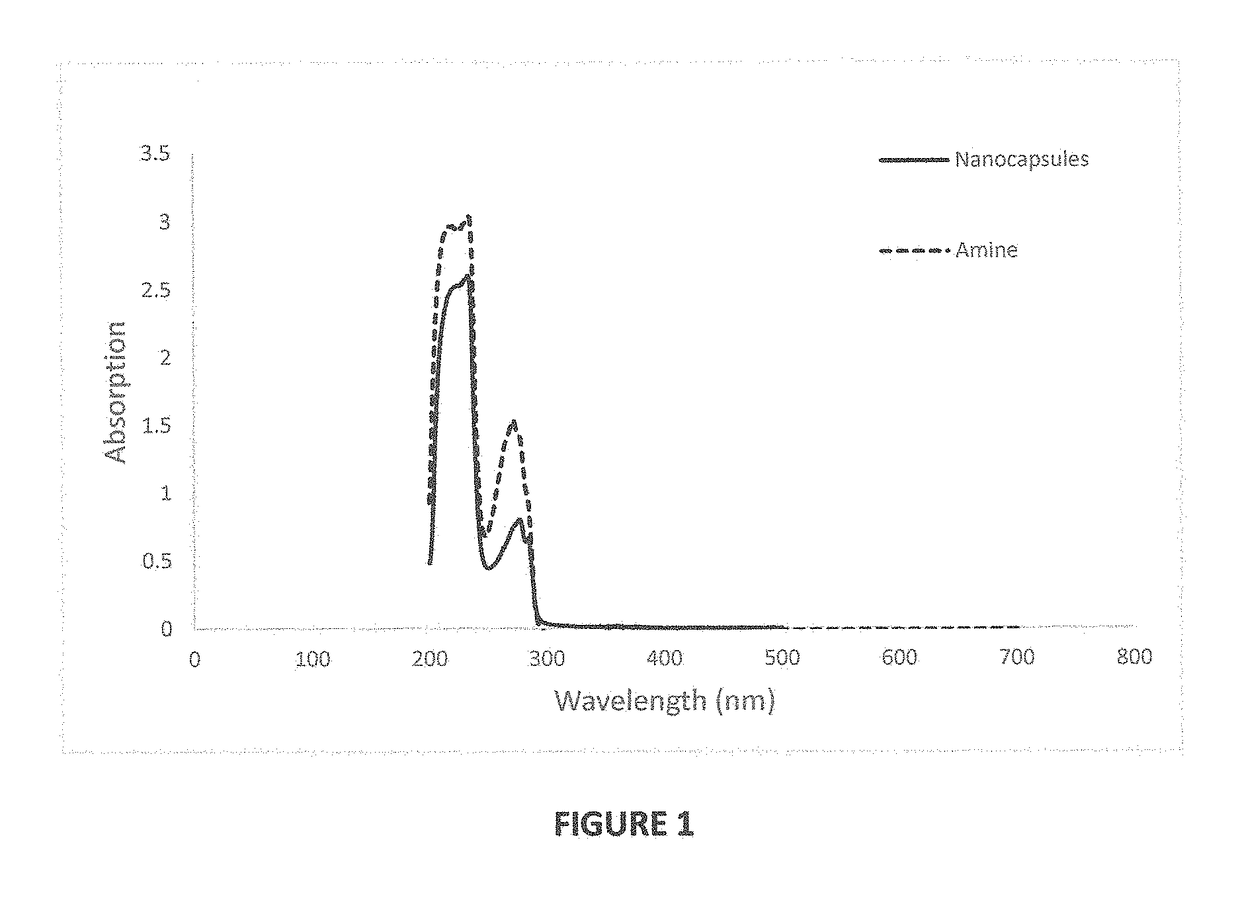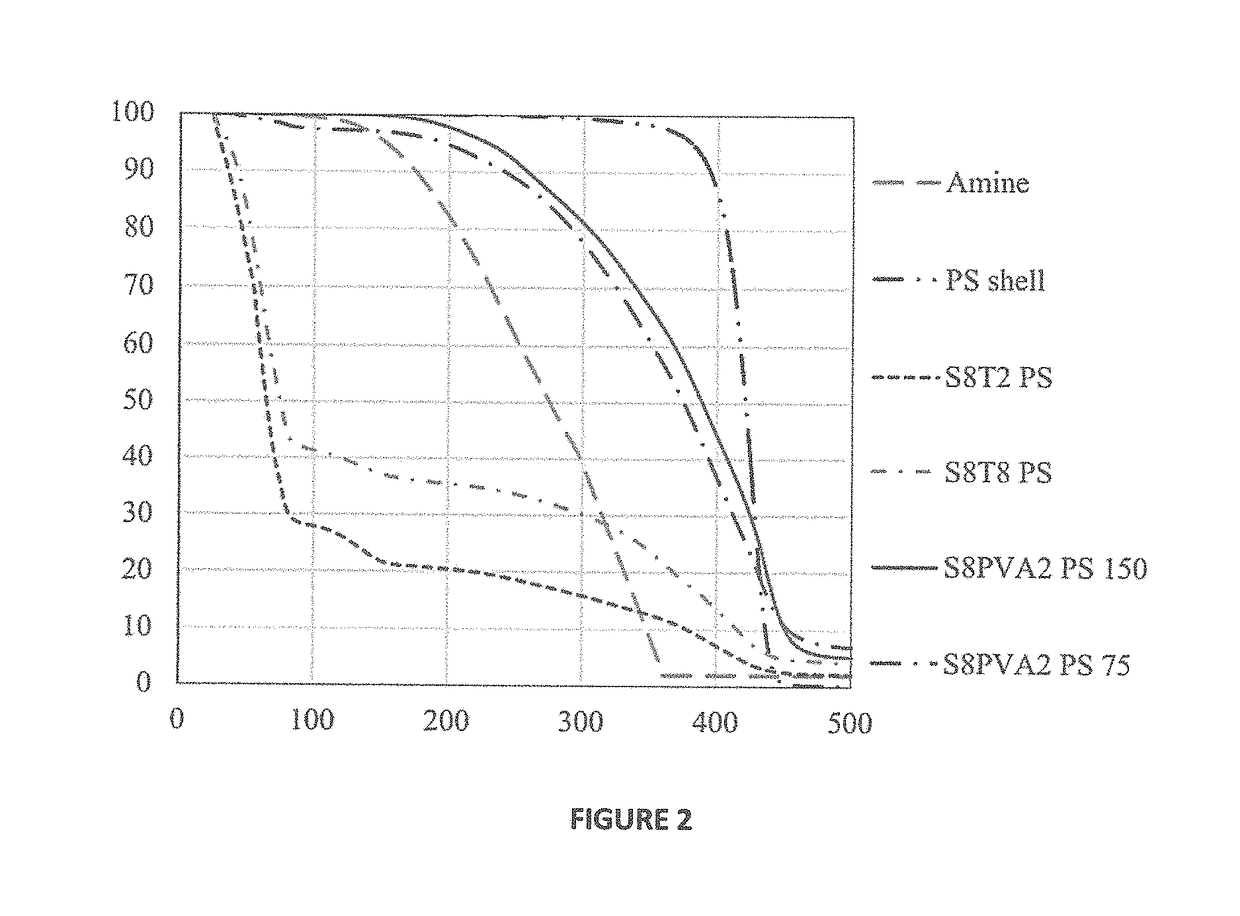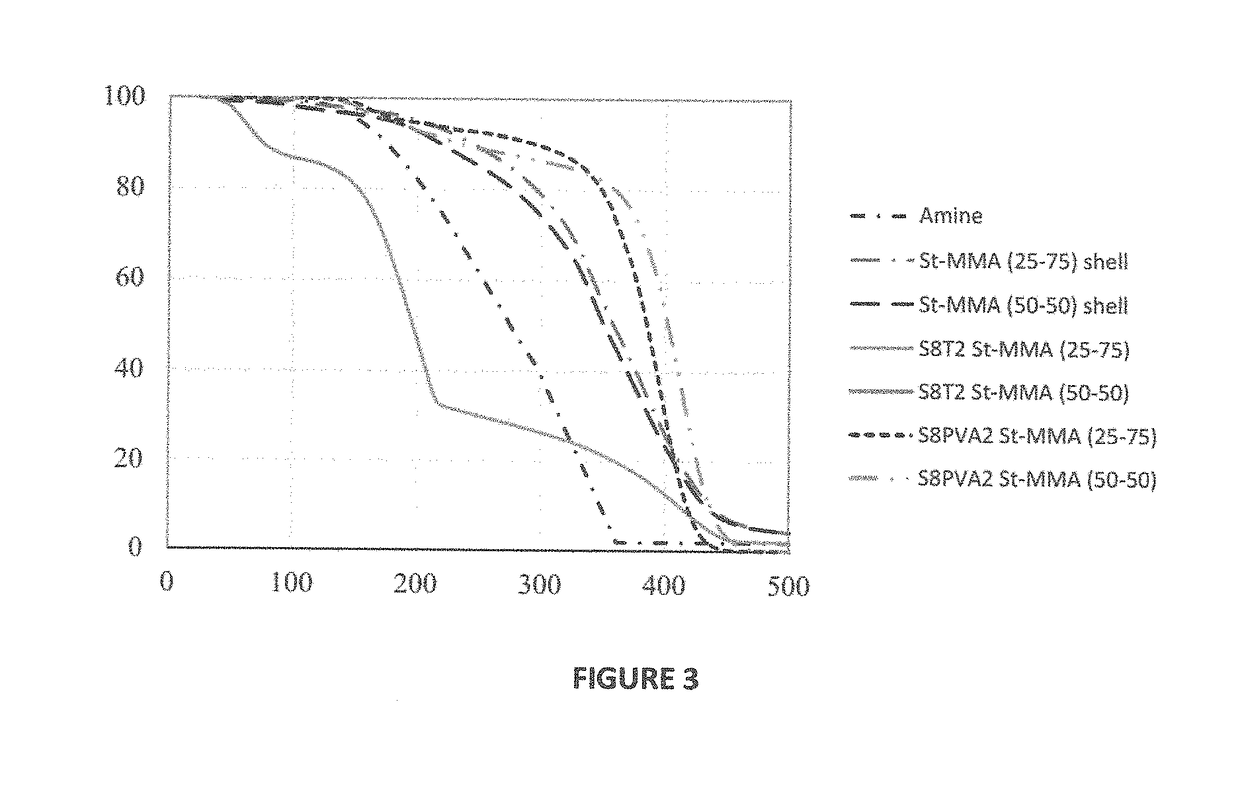Synthesizing nanocapsules containing reactive amine
a technology of reactive amine and nanocapsules, which is applied in the field of system for encapsulating reactive amines, can solve the problems of limiting the healing ability of the system, difficult observation, and very fast elimination process of liquid amine capsules, and achieves super-fast and simple preparation, superb core content, and high thermal resistance
- Summary
- Abstract
- Description
- Claims
- Application Information
AI Technical Summary
Benefits of technology
Problems solved by technology
Method used
Image
Examples
example 1
[0058]In this example, 0.5 ml diamine (W1) was emulsified into a 5 ml dichloromethane solution (O) containing 150 mg polystyrene as the shell of the nanocapsules, and 0.1 gram span60 as the internal surfactant. The emulsification was carried out by sonication using a probe sonicator at 52% power for 20 seconds and the primary emulsion (W1 / O) was formed. Next, 15 ml of an aqueous phase containing 7.5 ml glycerin, 7.5 ml deionized water and 1.2 gram of tween60 as the external surfactant (W2) was immediately poured into this primary emulsion (W1 / O) and was sonicated under the same conditions described hereinabove for 20 s to produce a W1 / O / W2 emulsion. The system was then attached to rotary vacuum evaporator immediately until the middle oil phase evaporated. Finally, the nanocapsules produced as described hereinabove, were collected by centrifugation. Multiple washes and centrifugation steps were necessary to remove the excess water and surfactant. All the process was performed at ambi...
example 2
[0059]In this example, all the steps described in connection with Example 1 were carried out the same, with the exception of the amount of span60 which acts as the internal surfactant in the organic solution (O). Here, 0.2 g span60 was used instead of 0.1 g as disclosed in the Example 1. The resultant nanocapsules are labeled as S4-T8PS 150 nanocapsules.
example 3
[0060]In this example, all the steps described in connection with Example 1 were carried out the same, with the exception of the amount of span60 which acts as the internal surfactant in the organic solution (O). Here, 0.4 g span60 was used in this example. The resultant nanocapsules are labeled as S8-T8 PS 150 nanocapsules.
PUM
| Property | Measurement | Unit |
|---|---|---|
| size | aaaaa | aaaaa |
| size | aaaaa | aaaaa |
| weight percent | aaaaa | aaaaa |
Abstract
Description
Claims
Application Information
 Login to View More
Login to View More - R&D
- Intellectual Property
- Life Sciences
- Materials
- Tech Scout
- Unparalleled Data Quality
- Higher Quality Content
- 60% Fewer Hallucinations
Browse by: Latest US Patents, China's latest patents, Technical Efficacy Thesaurus, Application Domain, Technology Topic, Popular Technical Reports.
© 2025 PatSnap. All rights reserved.Legal|Privacy policy|Modern Slavery Act Transparency Statement|Sitemap|About US| Contact US: help@patsnap.com



